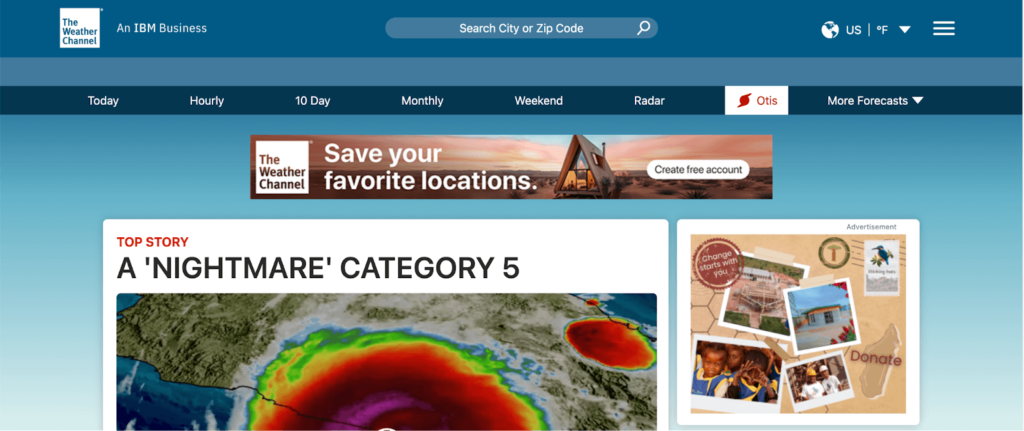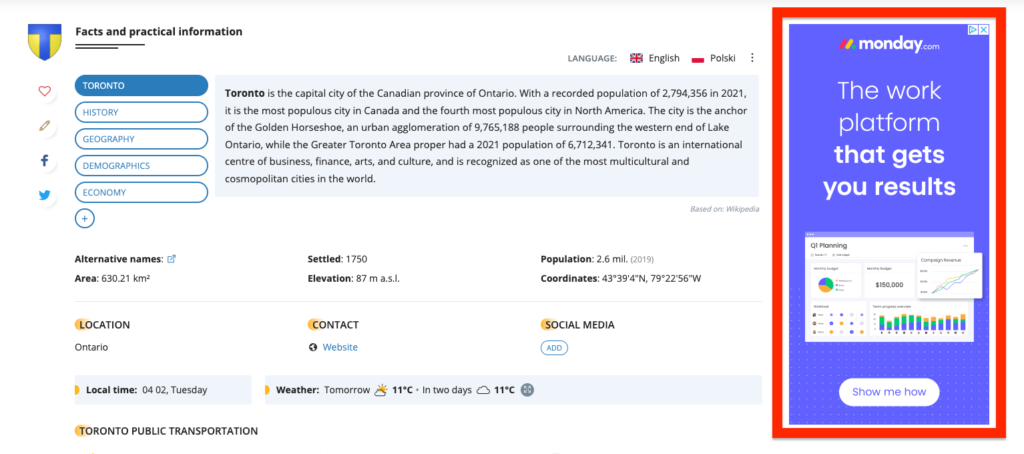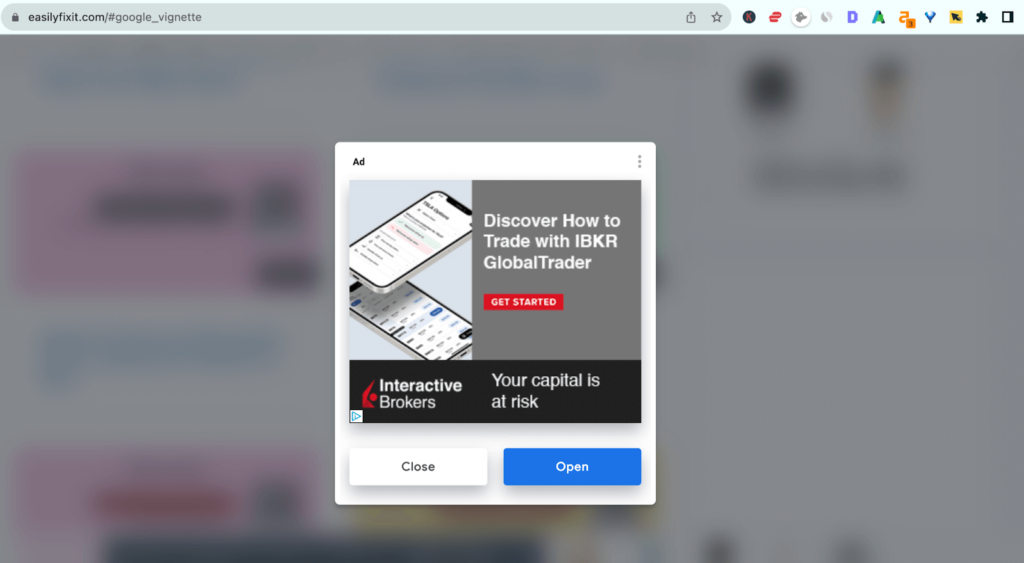11 Tips to Increase AdSense RPM
AdSense RPM is an important metric in Google AdSense that measures the revenue generated from every 1,000 ad impressions on a site. It essentially determines the potential earnings a website can achieve for every thousand times an ad appears.
As a publisher and content creator understanding AdSense RPM is essential to ensure optimal revenue generation in an ever-evolving digital environment. To increase AdSense RPM, you must get deep into analytics, constantly refine your strategies, and adapt to changing audience behaviors.
Why does this number matter? With the right ad network, publishers can achieve a higher RPM, which directly translates to increased profits. The more effectively a website can transform impressions into earnings, the more lucrative the outcome becomes.
Tip 1: Optimize Ad Placement
Boosting your revenue per thousand impressions (RPM) significantly depends on ad placement optimization. Enhancing your AdSense RPM begins with understanding and implementing effective ad placement strategies.
Key areas for ad placement
- Right or left of the page: According to Google AdSense’s report, ads on the right or left side of the page perform better than those in the middle.
- Near the bottom of the screen (right above the fold): This position has demonstrated the highest viewability rates according to Google’s data.
- In-between content: Seamlessly blending ads between sections can attract a reader’s attention without being disruptive.
- Adjacent to engaging elements: Positioning ads near images, videos, or other captivating content increases the chances of interaction.

Here is an example of the ad placement which is in the viewport, however, not at the very top of the page, where it could easily be ignored. This is a great area for a banner.
While viewability is paramount, it’s important to ensure that ad placement does not harm the user experience or overshadow the main content.
With the variety of devices and screen sizes, responsive and adaptive ad units, which automatically adjust size and layout based on the device’s screen size, have become more significant than ever.
Combining effective ad placement with responsive and adaptive design ensures maximum visibility and contextually relevant ad presentation. These elements, when synchronized, can increase your site’s AdSense RPM.
Tip 2: Focus on High-Paying Keywords
Keywords act as the anchor in RPM. The reason is simple: certain keywords are in higher demand by advertisers due to their strong conversion potential. Such high-demand keywords command a higher CPC (Cost Per Click), which in turn can significantly boost your RPM.
How to Target High-Paying Keywords Effectively
- Research Tools: Rely on trusted tools like Google’s Keyword Planner or SEMrush. These rank tracking software not only provide a list of potentially high-paying keywords but also give insights into search volume and competition.
- Competitor Analysis: Don’t work in isolation. Keep an eye on what keywords your competitors are targeting. There are chances they’ve identified some gems you’ve missed.
- Niche Exploration: Broad topics have massive competition. Digging into niche subjects often reveals keywords that are both high-paying and less competitive.
- Natural Integration: Once you’ve identified these keywords, the next step is embedding them naturally within your content. AI text generator can be a helpful tool for ensuring that your keywords are integrated naturally and seamlessly into your writing. Remember, user experience is important. Overstuffing can deter readers and negatively impact RPM.
By centering your content strategy around high-paying keywords while ensuring a seamless user experience, you can set the stage for RPM growth. Stay vigilant and continuously update your keyword strategy to adapt to new trends and updates when needed.
Tip 3: Choose the Right Ad Format
Ad format is crucial in both user experience and revenue generation. High-performing ad formats tend to offer better visibility and engagement without hindering user navigation. Here’s how to make the best choices:
- Performance Metrics: Monitor metrics such as click-through rates (CTR) and viewability. High CTRs usually indicate an engaging ad format.
- User Feedback: Gather feedback from your audience. If they find certain ads annoying or obstructive, it’s time to reassess.
- Non-Intrusive Designs: Ads like native ads or in-content banners blend well with the content, ensuring users aren’t bothered by them.
- Responsive Ads: With a diverse range of devices accessing content, opting for responsive ad designs ensures consistent visibility across all platforms.
The right ad format strikes a balance between visibility and user experience. By focusing on engagement metrics and user feedback, publishers can adopt ad formats that resonate with the audience while optimizing revenue.
Tip 4: Increase Website Traffic
Naturally, the more eyes on your content, the greater the potential for ad engagement. So, how to boost traffic effectively?
- Google’s Helpful Content Update: Focus on creating content that provides direct answers and solutions to user queries. Google’s algorithms are designed to reward content that adds genuine value to the user experience.
- Mobile-First Indexing: Optimize your site for mobile users first, as Google now completely uses the mobile version for ranking and indexing.
- Google Discover Optimization: With Google Discover now accessible on desktop in beta, optimizing for this channel can increase visibility and attract users in the early stages of the search journey.
- Diversify Across Platforms: Tailor your content for different social media platforms to engage with a wider audience.
- Strategic Sharing: Disseminate content on social platforms favored by your target demographic to drive both direct and referral traffic. This can significantly enhance your site’s exposure and, subsequently, your AdSense RPM.
Increasing website traffic, especially through organic means, lays the foundation for higher RPM. With the right strategies, you not only drive traffic but also improve user engagement, leading to a win-win situation for both publishers and viewers.
Tip 5: Experiment with Ad Types
Diversifying the ad experience with different ad types can be crucial in maximizing RPM. Here are some options offered by AdSense that you should be familiar with as a publisher:
- Text & Display Ads: These are the traditional types that appear as banners or sidebars. They can be both text-based or feature visual graphics.

- In-feed Ads: Integrating seamlessly into feeds, they blend with your content, offering a less disruptive user experience.
- In-article Ads: Specifically designed for articles and content pages, these ads are optimized for mobile and desktop readability.
- Overlay & Vignette Ads: These full-screen ads are mobile-optimized and can offer high visibility, though it’s crucial to monitor if they deter user engagement.

While experimenting is beneficial, it’s paramount to ensure that the user experience remains unhampered. Overloading a webpage with ads or using overly intrusive formats might deter visitors. It’s a balancing act between optimizing RPM and ensuring that your audience continues to find value and comfort on your website.
Tip 6: Optimize the Website for Mobile Devices
The rise of mobile traffic is undeniable. According to Statista, mobile devices generated 58,33% of the global website traffic. As more users transition to smartphones and tablets for browsing, the importance of a mobile-optimized website becomes paramount for RPM optimization.
Mobile-optimized sites typically experience higher user engagement, which can increase ad impressions and clicks, consequently boosting RPM. Additionally, optimizing ads for mobile ensures they are presented attractively and correctly, thereby improving click-through rates.

Tips for Mobile Optimization
- Ensure your website layout adjusts seamlessly across various screen sizes with a responsive design. A site that looks great on desktop but is misaligned on mobile can deter visitors.
- Simplify the menu and user interface for more intuitive navigation. Mobile screens are smaller, so It’s important to make things clear and easy to navigate.
- Put ads where they’re most likely to get attention without disrupting content consumption. Remember, an ad unseen on mobile is a missed revenue opportunity, so good ad placement is crucial.
With the continuous surge in mobile traffic, prioritizing mobile optimization is a must. By ensuring a smooth, mobile-friendly user and ad experience, you can capture a significant portion of this growing audience and increase your AdSense RPM.
Tip 7: Quality Content Creation
Engaging, insightful content not only draws readers in but keeps them coming back, fostering an environment ripe for ad interactions and elevated RPM.
Quality content ensures:
- Audience retention, as compelling pieces captivate readers and keep them on your site longer. The longer they stay, the more likely they’ll interact with ads.
- Established trust and credibility. Delivering value that addresses specific queries within your industry, backed by data and insights.consistently marks your website as a trusted source, encouraging repeat visits and shares.
Diving into the relationship between SEO and content marketing, it’s necessary to realize they’re two sides of the same coin. Search engines treasure comprehensive content that addresses user queries.
Such content, enriched with strategically placed keywords, amplifies your website’s visibility. And if you ever run out of content ideas, you can always use a writing prompt generator.
Moreover, standout pieces naturally earn backlinks, a powerful SEO booster. Diverse content formats, ranging from detailed articles to infographics, cater to varied audience preferences, enhancing engagement.
Tip 8: Switch to Setupad Prebid AdSense
Setupad Prebid AdSense is a tailored product for AdSense publishers, designed to enhance their AdSense Revenue Per Mille (RPM) by integrating AdSense demand with Setupad’s Prebid demand from over 30 premium SSPs.
This integration occurs through a real-time auction system and increases yield, where the highest bidder wins the ad impression. Such a competitive environment encourages AdSense to offer higher prices for ad placements, thus maximizing ad revenue for publishers. Additionally, publishers benefit from Setupad’s Prebid Server, which facilitates server-to-server (S2S) connections. Moreover, Setupad provides comprehensive technical support and header bidding management without additional costs to the publisher.
Tip 9: Use Google Analytics to Track Your Results
Data drives decision-making. Google Analytics is an incredibly powerful tool that provides deep insights into how users interact with your website. More than just visitor count, it has insights on user behavior, time spent on pages, and bounce rate – all crucial for understanding and improving RPM.
Publishers can set up specific goals within Google Analytics to monitor RPM changes and understand which content or ads bring the most revenue. By keeping an eye on these insights, adjustments can be made in real time, ensuring you’re always ahead of the curve.
Tip 10: Increase Website Speed
According to studies, if a website takes longer than four seconds to load, one in four visitors will quit. Therefore, having good website speed is crucial.
A faster website not only offers a better user experience but ensures ads are seen and interacted with, positively impacting RPM.
Here’s how you can enhance your site’s loading speed:
- Compress Images: High-resolution images can bog down your site. Use online tools like TinyPNG to reduce file sizes without compromising quality.
- Minimize Code: Clean up your site’s code by eliminating unnecessary characters, whitespace, and comments.
- Use a CDN: Content delivery networks (CDN) distribute your site’s content across global servers, ensuring users access data from the nearest server, thus speeding up load times.
- Optimize Server Response Time: Choose a reliable hosting provider and regularly monitor your server’s performance to ensure swift responses.
- Leverage Browser Caching: This lets returning visitors load your site faster, as certain elements are stored locally on their devices. Adjusting caching settings can have a significant impact.
Always remember: Every second saved enhances user experience, leading to satisfied visitors and potentially higher ad engagement.
Tip 11: Engage with the Audience
Creating rapport with your audience is key to enhancing RPM. Proactively engage with readers by responding to comments, initiating conversations, and deploying surveys or polls. Consider sending welcome emails to new subscribers to introduce yourself and your brand, share your story, and explain what readers can expect from your content.
And if you don’t have the time to engage all the time? An AI chatbot on your website that can answer their questions shows that you still care about user experience.
Such interactions build trust and grant deep insights into what they value. Use this knowledge to refine your ad placements and curate content that resonates. A personalized touch in content delivery can elevate user experience, driving more clicks and, subsequently, a boosted RPM.
Conclusion
Boosting AdSense RPM isn’t a one-time affair; it demands consistent effort and adaptation to evolving digital trends.
Whether it’s optimizing website speed, creating compelling content, or leveraging powerful tools like Google Analytics, every action converges towards one goal: maximizing ad revenue.
Embrace these tips, be patient, and watch your earnings flourish. Every small improvement contributes to a more profitable outcome.


